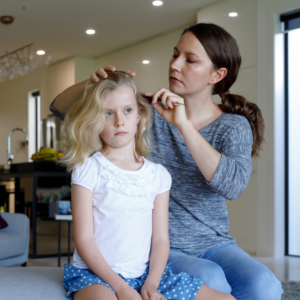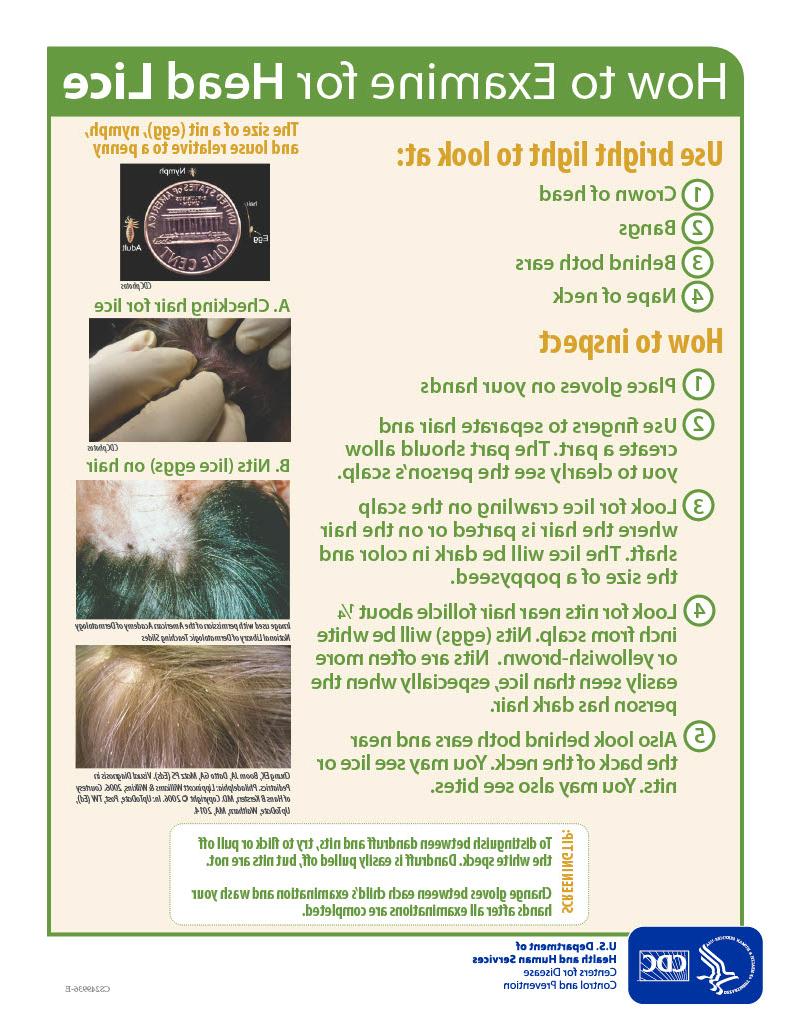
Wyandot County Public Health's Head Lice Eradication program offers education to families and head checks for release back to school.
We're here to make the process of removing head lice and getting back to normal easier for your family. Please see the following frequently asked questions:
While anyone can get head lice, they are very common in school aged children. Lice affect people in all socioeconomic classes. Lice often carry a social stigma, and, it’s not a reflection on cleanliness.
Wyandot County Public Health encourages people with school-aged children to check their family members for Head Lice weekly. If lice are discovered, contact the child’s school or alert Wyandot County Public Health by calling 419-294-3852.
The first sign of lice is frequent scratching and itching of the head. They are often found at the nape of the neck or behind the ears.
Head Lice are small (sesame seed-sized) yellowish-white insects that live on the human scalp and feed off human blood from the scalp.
The female head louse can lay up to 10 eggs per day and over 100 eggs in her lifetime. Lice attach the eggs to the host’s hair shafts with a cement-like glue. These eggs can be seen by the naked eye in proper lighting. Eggs hatch approximately one to two weeks after they are laid.
NOTE: Head Lice are uncomfortable and can be embarrassing, but they do not carry infections or cause health problems.
While lice cannot jump or fly, they can move rapidly and are transferred by direct contact.
Head Lice may be lurking on items such as combs, brushes, hats, coats, headbands, hair clips, headsets, helmets, stuffed animals, costumes, pillows, and upholstered seats in a theater, bus, or plane.
TIP: Encourage your family to avoid sharing personal care items and head wear. Head Lice and nits on bedding and clothing can be killed by washing, soaking, or drying items at a temperature greater than 130°F.

Removal of head lice typically involves a treatment process in which a product is applied to the infested person’s scalp to eliminate all live lice. Many treatments involve a secondary treatment to eliminate any lice hatching from eggs laid after the first treatment.
Removal of all nits after successful treatment with a pediculicide (lice killing product) is not necessary to prevent further spread. However, because lice killing products do not kill all the egg stages, Wyandot County Public Health recommends the manual removal of all nits, especially those that are attached within ¼ inch of the base of the hair shaft.
Complete removal of nits is common for aesthetic reasons and to reduce diagnostic confusion and the chance of unnecessary retreatment. Nit removal is often a lengthy process that can take more than one day.
NOTE: Treatments for head lice are generally safe and effective when used correctly. Some treatments may cause an itching, or a mild burning sensation caused by inflammation of the skin on the scalp. Most products used to treat head lice are pesticides that can be absorbed through the skin. Therefore, all medicines used for the treatment of lice should be used with care and only as directed.
Using shampoos and conditioners that list Sodium Lauryl Sulfate as an ingredient should act as a preventative and protect people from re-infestation. Be sure to follow treatment instructions about usage of shampoo and conditioner products before and after pediculicide treatments to ensure product effectiveness. Common product options including Sodium Lauryl Sulfate are Suave, White Rain, Herbal Essences, and Queen Helene Conditioning Crème.
Head Lice can live for up to a week on furniture, clothing, and stuffed animals. Eggs can still hatch when not on the scalp but will soon die without the nutrients of human blood.
Washing, soaking, or drying items at a temperature greater than 130°F can kill both head lice and nits. Routine vacuuming of floors and furniture is sufficient to remove lice or nits that may have fallen off the head of an infested person.
Although rarely necessary, some experts recommend that items that may be contaminated by an infested person and that cannot be laundered or dry-cleaned should be sealed in plastic bag and stored for 2 weeks to kill any lice that already are present or that might hatch from any nits that may be present on the items.
Head Lice do not live on pets. Pets do not play a role in the spread of head lice.
NOTE: Use of insecticide sprays or fogs is NOT recommended. Fumigant spray and fogs can be toxic if inhaled or absorbed through the skin and they are not necessary to control head lice.
